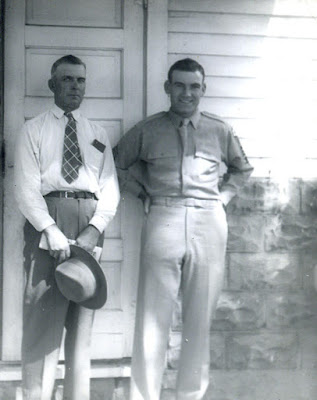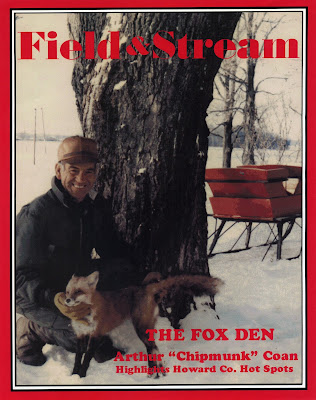In this post, you will read wedding announcements that indicate the couples' intention to farm. There is also a link to Settie Graf Locke's account of her family's emigration from Germany to Indiana and how they began farming. Peter and Jane Touby established the farm where the five Touby sisters grew up, the Touby Homestead farm that their grandfather Albert had developed, and their father Emmett continued to farm. Albert was careful to divide things carefully among his children and purchased farmland to deed to his daughters Jenny, Bess and Mary. Jenny, did not go to high school, but had stayed home to take care of her parents Albert and Kate. Emmett was the first to graduate from Kokomo High School, and then from Kokomo Business School. He was farming for his father when he and Elsie Locke were married. Like their brother Emmett, Bess and Mary took a room in Kokomo in order to attend high school. Jenny married Ross Fennell and they farmed in Tipton Co. Bess worked for Red Cross after high school as her husband to be, Shell Lovejoy was fighting in France during WWI. Bess and Shell married and they farmed in Taylor Twp., Howard Co. Mary married Earl Morris and they farmed two and a half miles east of Russiaville.
Albert's diaries are filled with accounts of planting, cultivating, and harvesting. He noted the weather, trips to town to purchase supplies, and the sale or purchase of livestock; the daily and seasonal rhythms of farming are recorded in its pages. Church and farm were the spiritual and economic gears of the farming community. They were also the social hub. Helping one another plant and harvest was necessary for survival. The church women organized quilting bees, ice cream socials, meals and assistance for families in need.
Louise and Virginia Touby both married farmers. Louise Touby married Charles Coan and they settled on a farm just south of the Touby farm in Howard Township. Virginia Touby married Arthur Coan just after Arthur's return from WWII and begin farming the George Locke farm in Liberty Township. Both Charles and Arthur had farmed with their father, George, as he had done with his father Abraham. George's wife Mabel Wimmer also grew up on a farm.
Other farming posts on this blog:
- Growing up on Liberty Grove Farm
- Grape Hyacinths
- Corn Husking
- Neighborhood News
- Locke Family History
- Graf History
- Early Homes of Howard Township
TOUBY FAMILY
Peter and Jane Touby took up farming and made their home in Howard Township, Section 9. Peter was instrumental in building the road along his property on into Kokomo. It was named the Touby Pike. Peter and Jane's son Albert, and Albert's son Emmett were all farmers.
Two of the five Touby sisters, Louise and Virginia, married Coan brothers, Charles and Arthur, who both pursued farming in Howard County.
Peter and Jane Touby with their son Albert.
Their first home in Bentonville, Fayette Co., Indiana. Albert C. Touby was born here in 1851.
Photo c. 1919.
From the 1877 Howard County Atlas
A photograph of the barn shown in the Atlas.
Kate and Albert C. Touby
The Albert and Kate Touby home on 500 N.
Emmett Touby and Elsie Locke in the grove of the George Locke farm.
Emmett Peter Touby married Elsie Locke on Christmas Eve in 1914 in the George Locke home.
Amos and Andy
The Touby Homestead barn
Recent photos of the Touby farm, now owned and farmed by the Stites family.
GRAF FAMILY
Philip Graf and his wife Caroline Schaaf both came from Germany with their families. Caroline had come to America as an eleven-year-old with her family in 1840. Philip, who had farmed his parents' farm in Rockenhausen, took up farming in Howard County, near Plevna, Indiana. Read Settie's account of how they cleared the land and began their life together.
Settie Graf was the youngest daughter of Philip Graf. She married George Luther Locke and they began farming the land his father Elias had purchased in Liberty Township, Howard County.
LOCKE FAMILY
Settie Graf Locke
George Locke
TAKES UP FARMING: Excerpt from Locke Family History published 1924
We do not know at what time in life he was married, nor do we know her name before marriage. All we know is that after the War of Independence was won, that he had a companion of his choice and settled upon a farm near where the city of Frederick, MD now stands and did all in his power to help develop the country; and as time went on, there came to bless this union, four sons and two daughters. At least, that is all of whom the writer has any knowledge. These sons were Henry, Abraham, John and George. I never learned the Christian names of the two daughters. All I know is that one daughter was married to a Mr. Ott, the head of the Ott family in Preble county, O., and the other married John Etzler.
Another excerpt from that same account:
COMPELLED TO CLEAR LAND
When at last they reached their destination they found no houses ready
to receive them, and were forced to camp in the woods until they could
erect cabins in which to live, being first compelled to clear the land
of timber. It was several years before they had sufficient land cleared
to raise enough to support the family. And they were compelled to
depend upon the wild game, of which there was an abundance, for a part
of their food.
When we hear people complaining of the privation of which they are
suffering today, we cannot help but wonder what we would have done had
we lived here in that day when the people were compelled to live on corn
bread almost entirely. It was years before they could raise sufficient
wheat to supply all with bread. For fruits, they lived upon the wild
fruits. There were no orchards or vineyards. They had no groceries to
go to such as we have today. Coffee and tea were almost unheard of
luxuries. For coffee they used parched corn or rye, and for tea they
used the tender shoots of the spice bush or the bark of the sassafras.
For sugar they had us beat to a frazzle. Instead of the sugar we get
today, they went into the woods in early spring, tapped the sugar maple,
caught the sap and boiled it down in the finest sweets that mortal ever
tasted.
But, oh, the long dready [sic] nights in winter. The men and larger
boys would get strong all right; for they were always busy either
threshing the grain or working in the deadenings, [sic] or, for
recreation, they would hunt or trap. But the women and little children,
how the winter must have dragged for them! For the neighbors were few
and far between, and schools were scarce and of short duration. How the
women and children must have shuddered of a winter night when they
listened to the howl of the wolf, the screech of the panther, or the
hooting of the owl. They knew if they were out in the open,
unprotected, that they would not have lived long. In the summer, the
fields were infested with poisonous rattle snakes and disease lurked in
every pool, malaria in the swamp. And the dreaded milk sickness was apt
to be contracted from using milk from cows that ran in the woods.
Thus, we see that they were subjected to all kinds of danger and
privation. Yet, they never faltered. They had come to change the
wilderness from a wild and desolate spot to the fertile field and
beautiful home.
You need not go far to see whether they and their descendants
accomplished their object. They exterminated the dangerous animals and
reptiles. They changed the swamps to fertile fields, and have made safe
a desirable spot in which to live. We can see that Capt. Locke and his
descendants have played well their parts in helping to subdue the
wilderness and to build up one of the grandest and wealthiest estate [states?] of our old United States.
COAN FAMILY
The Christopher Wimmer family. Mabel Wimmer Coan (far left) is holding young Charles.
The George Coan farm on 500 N.
The Coan men: George, with his sons Arthur, Robert and Charles.
George, Charles, Arthur, Robert, Mabel and little Patricia.
George and Mabel
Arthur guides his horse Tony as George inspects the row.
Rich Valley Church at 500 N. - 300 E. in Howard County.
Emmett Touby and George Coan at a meeting of farmers.
CHARLES COAN
Charles Wilson Coan and Louise Touby were married on Valentine's Day in 1935 in the Touby home. Their farm, named Fairlea Farm, was on property originally owned by Peter Touby, eventually ending up with Bess (Touby) and Shell Lovejoy. Charles and Louise began farming there and at first rented the property from her Aunt Bess and Uncle Shell. They later purchased the land.
The Charles Coan farm on Touby Pike (400 N. and ~225 E.)
Arthur, above, with Louise and Charles in Round Lake, Michigan. The two brothers loved to fish.
Arthur and Charles (with his camera - he loved photography) at Jane's wedding.
ARTHUR COAN
Arthur James Coan and Virginia Touby married June 22, 1946.
Arthur tending his tomato crop on the morning of his wedding, June 22, 1946.
Arthur and Virginia bringing in a load of hay. Arthur was home on furlough to help with the harvest.
Emmett Touby, David and Arthur Coan
Arthur loved growing roses and gladiolas.
The photograph (1971) source for the drawing.
"Arthur's Hands" graphite drawing.
The two Arthurs: Arthur Coan and Artur Arques.
Artur came from Barcelona to spend the summer of 1974 in Greentown.






































































No comments:
Post a Comment
Please comment...